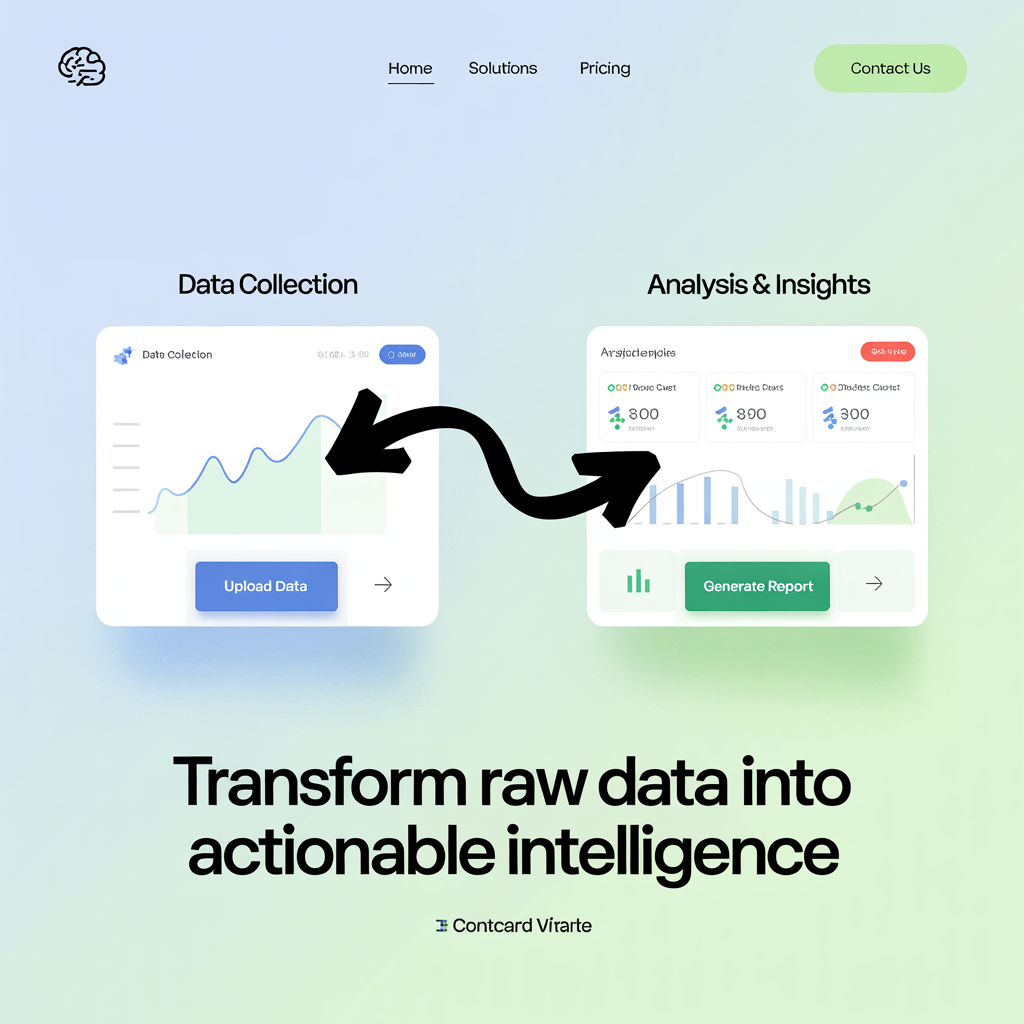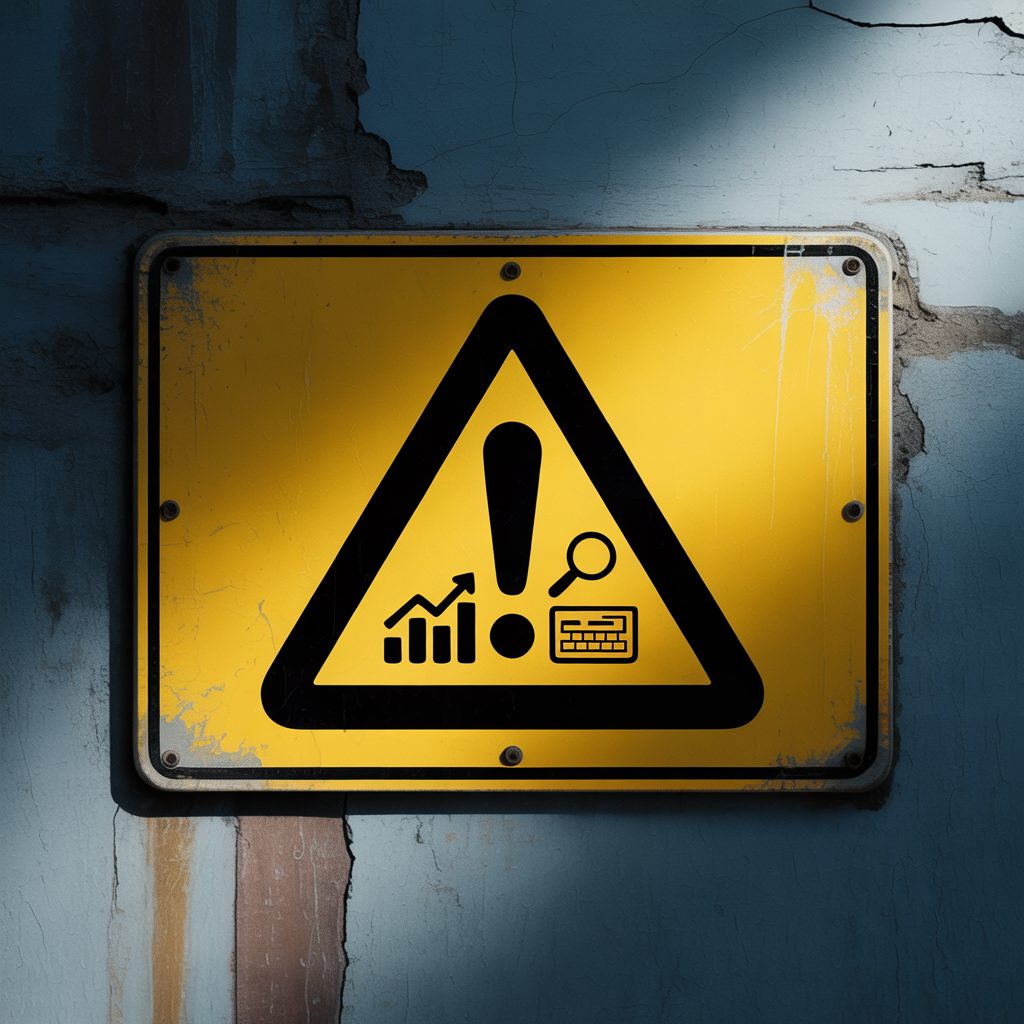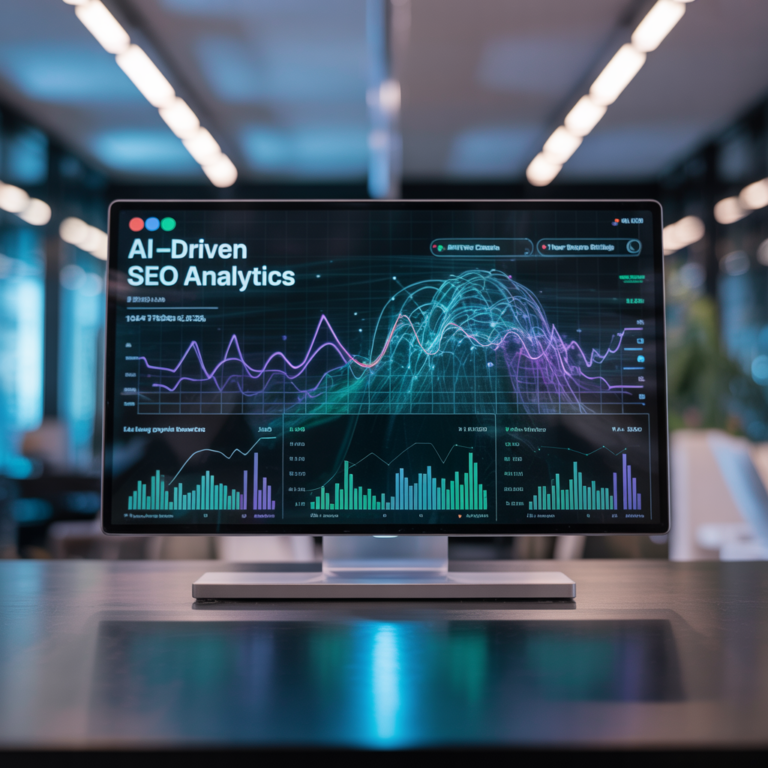Imagine being able to test dozens of landing page variations without spending weeks creating them. Or knowing which version of a headline will get more clicks—before the data even rolls in.
That’s the promise of AI-powered A/B testing for SEO.
SEO A/B testing helps you understand which changes lead to better rankings, more clicks, and higher engagement. But traditional methods can be slow and resource-heavy.
AI changes the equation. With automation, prediction, and scale, AI lets marketers and SEOs move faster and smarter. This article explores how AI A/B testing works, its benefits, and how you can start using it to grow your traffic.

What is AI A/B Testing for SEO?
Traditional SEO A/B Testing
SEO A/B testing involves changing one element on a page (or group of pages) and comparing performance to a control. The goal is to isolate changes that impact search rankings and user behavior.
Here’s how it works:
| Element Tested | Control Example | Variant Example |
|---|---|---|
| Title Tag | “Affordable Dog Training in Vegas” | “Top-Rated Dog Trainers Near You” |
| Meta Description | “Expert training for all dog breeds” | “Las Vegas’ #1 Dog Training Experts” |
| Heading Structure | <h1>Dog Training</h1> | <h1>Best Dog Training Services</h1> |
| Internal Linking | Link to homepage only | Links to blog, FAQ, and service pages |
Limitations of traditional SEO testing:
Takes weeks or months to run a single test
Requires a team to build and monitor variants
Difficult to scale across large websites
Insights are delayed and often shallow
How AI Enhances SEO A/B Testing
AI doesn’t just speed up the process—it transforms it.
Automated Test Creation and Deployment
AI tools can automatically:
Generate headline, meta, and content variations
Deploy variants to test groups
Set up tracking and analytics
Predictive Analytics and Faster Insights
Using machine learning, AI models can:
Forecast likely winners based on historical data
Shorten test cycles by identifying early trends
Highlight which changes matter most for SEO
Real-Time Algorithmic Adjustments
Some platforms go a step further by:
Continuously updating variants based on real-time performance
Using reinforcement learning to optimize toward goals like CTR or dwell time
Adapting to algorithm changes or competitor shifts automatically
AI makes SEO testing more responsive, strategic, and scalable—especially for teams managing large volumes of content.
Benefits of Using AI for SEO A/B Testing
Improved Efficiency
AI reduces the time and effort required to set up and run tests.
Reduce Manual Work in Test Setup and Analysis
Instead of creating each variant by hand, AI can:
Suggest changes based on ranking factors
Auto-generate new meta tags, titles, and even page content
Track key performance metrics in real time
Automate Variant Generation at Scale
Want to test different headlines across 1,000 landing pages?
AI can:
Create customized variants for each page
Keep messaging consistent with brand tone
Ensure SEO best practices are followed
Faster Test Cycles
Speed is a game-changer in SEO.
AI Speeds Up Insights Through Predictive Modeling
AI doesn’t need to wait for months of data. It can:
Analyze user behavior and engagement signals instantly
Compare against known benchmarks
Predict the success of a change early on
Enables Continuous Testing and Iteration
With AI, A/B testing becomes an ongoing, automated process. This means:
Your site is always learning and improving
You’re not limited by team bandwidth
Updates happen in near real time
Best Practices for Implementing AI in SEO Testing
Start Small, Scale Fast
AI-powered SEO testing is powerful, but it’s best to begin with a focused approach.
Begin with High-Traffic Pages
It’s tempting to test everything at once, but that can overwhelm your team and dilute your results. Instead:
Pick high-traffic landing pages or those that are already performing well.
Focus on pages that have the most potential to boost conversions or rankings.
Starting with a few pages gives you the opportunity to learn and adjust before scaling to the rest of your site.
Use Learnings to Apply Changes Sitewide
Once you see positive results on a few pages, it’s time to expand. AI can help you automate the process of:
Replicating successful strategies across multiple pages.
Scaling experiments to include more variants or new elements (e.g., internal linking or content layout).
With AI’s speed and ability to analyze data, scaling becomes much easier and faster than manual testing.
Ensure Data Quality
Good data is the foundation of good AI testing.
Clean Input Leads to Meaningful Test Output
AI models rely on high-quality data to make accurate predictions. Make sure your data is:
Accurate: Ensure that traffic and user behavior data is being tracked correctly.
Consistent: AI works best when it has a clear picture of your audience’s behaviors over time.
Complete: Missing data can skew results. Track all relevant metrics, such as bounce rate, dwell time, and click-through rates.
Without clean, reliable data, AI can’t give you the insights you need to make informed decisions.
Use Structured and Consistent Datasets
The more structured and consistent your data, the easier it is for AI to identify patterns. Ensure:
Data organization: Use well-labeled and structured data to feed into AI models.
Regular updates: Keep datasets fresh and up-to-date to ensure the AI doesn’t work off outdated or irrelevant information.
By maintaining good data hygiene, you ensure that AI can consistently provide actionable insights.
Monitor and Adapt Continuously
AI isn’t a set-it-and-forget-it solution. SEO is constantly evolving, so your AI testing should evolve with it.
Track SERP Volatility and Adjust Accordingly
Search Engine Results Pages (SERPs) can change frequently, especially with algorithm updates. AI can:
Track changes in SERP rankings automatically.
Adjust tests and content based on fluctuations in ranking factors or search intent shifts.
Monitoring SERP volatility ensures that you stay ahead of the competition and maintain optimal SEO performance.
Keep Human Review in the Loop
While AI is powerful, human oversight is still necessary. AI helps with automation, but humans are needed to:
Interpret results and adjust strategy based on broader context.
Check for errors in AI-generated content or test outcomes.
Ensure brand voice and quality are maintained across changes.
AI can take care of the heavy lifting, but human insight ensures that your SEO strategies stay aligned with business goals.

Risks and Limitations of AI SEO A/B Testing
Algorithm Dependence
AI is fantastic at predicting trends and optimizing strategies, but there are some risks to consider.
Risk of Overfitting to Short-Term Wins
AI tends to focus on the data at hand. This can lead to:
Short-term improvements that might not be sustainable over time.
Overfitting: Relying too much on AI-generated recommendations without considering long-term goals or broader trends.
To avoid this, balance AI recommendations with strategic human input to ensure you’re making decisions that benefit your site in the long run.
Google Algorithm Updates Can Change Outcomes
AI’s ability to predict trends is powerful, but it’s still dependent on data patterns. Google frequently updates its algorithms, which can impact results.
AI models may become outdated if there’s a major change in how Google ranks sites.
Always monitor how these changes affect your AI-driven tests, and adjust accordingly.
While AI can help you optimize for current trends, remember that SEO is always subject to change.
Interpreting AI Recommendations
AI can offer valuable suggestions, but it’s important to approach them with care.
Importance of Human Oversight
AI doesn’t understand your business goals, brand voice, or specific customer needs in the way you do. So while it might suggest certain changes based on data, it’s important to ask:
Does this change align with our brand voice and customer experience?
Is the AI-driven change sustainable in the long term, or will it need constant adjustments?
By combining AI-driven insights with human judgment, you get the best of both worlds.
Avoiding Misleading Correlations
AI is great at finding correlations in data, but not all correlations are meaningful.
For example:
AI might suggest a change based on a small dataset or short-term trend that doesn’t represent the broader picture.
Ensure that AI’s findings are validated with real-world results before committing to changes that could impact your overall SEO strategy.
It’s important to verify AI’s suggestions with a broader understanding of your audience, industry trends, and long-term SEO goals.
Breaking It All Down
AI-powered A/B testing isn’t a magic bullet for SEO success—but it is a powerful tool that can help you scale and optimize your strategies quickly and efficiently.
By automating the testing process, AI allows you to run more experiments, analyze data faster, and make smarter decisions. Whether you’re testing headlines, content layouts, or internal linking strategies, AI can take your SEO game to the next level.
Remember, while AI can make SEO testing easier, it’s still important to combine its power with human oversight. By balancing the two, you’ll be able to continuously improve your landing pages, adapt to changes, and drive better results.
Frequently Asked Questions
Choosing the right AI A/B testing tool depends on your needs, such as the size of your website, the type of experiments you want to run, and your technical expertise. If you’re looking for an easy-to-use, all-in-one solution, tools like RankScience and SplitSignal offer great features for automating and scaling tests. For more advanced users, building a custom solution with AI frameworks may give you more flexibility. Make sure to try demos or free trials to assess which tool aligns with your business objectives.
Yes, AI can help test changes to images, videos, and other multimedia content. Tools that support visual content testing can analyze user engagement metrics such as interaction rates, time spent on content, and how changes to visuals impact conversions or bounce rates. While traditional A/B testing focuses on text-based elements, AI tools can now incorporate multimedia changes to assess their impact on overall SEO performance.
Initially, AI-driven tests may seem expensive due to the investment in tools and technology. However, in the long run, AI-powered A/B testing is often more cost-effective than manual testing. This is because AI automates much of the test setup, data analysis, and even adjustments, reducing the need for constant human input. Plus, the faster insights and the ability to scale testing across a large number of pages can save both time and money.
When conducting AI-powered A/B tests, the key metrics to focus on include:
Click-through rate (CTR): The percentage of visitors who click through to your page from search results.
Dwell time: How long a user stays on the page, indicating engagement.
Bounce rate: The percentage of visitors who leave the page without interacting with it.
Conversion rate: The percentage of visitors who complete a desired action (e.g., form submission, purchase).
Rankings: The search engine position of your page before and after the test.
By tracking these metrics, you’ll gain a better understanding of how each change impacts your site’s performance and rankings.
Absolutely! AI A/B testing is valuable for optimizing mobile pages, as mobile SEO involves unique challenges like load speed, layout optimization, and mobile-specific user behavior. AI tools can test and suggest changes that enhance the mobile experience, ensuring better usability, faster loading times, and more mobile-friendly content. AI can analyze mobile-specific metrics like mobile bounce rates and click-to-call actions to ensure your mobile users have the best possible experience.
To ensure that AI is enhancing rather than harming your SEO, it’s important to:
Monitor SEO metrics regularly to confirm improvements over time.
Test in small batches: Start with a few pages to gauge AI’s impact before scaling.
Use human oversight: Always validate AI-generated insights with your knowledge of SEO best practices and your business goals.
Review changes after major algorithm updates: Keep an eye on how Google’s algorithm changes might affect your tests and ensure that your AI-driven adjustments remain in line with search engine guidelines.
AI A/B testing works on most types of websites, but its effectiveness can vary depending on the complexity of the site and the resources available. It’s particularly useful for large websites with many pages or high traffic, as AI can help automate testing at scale. However, smaller websites may still benefit, especially if you focus on high-conversion landing pages or critical pages that drive traffic. If your website is highly dynamic or niche, you may need to fine-tune your AI models for optimal results.
There’s no one-size-fits-all answer to this. It depends on factors like:
The volume of traffic: High-traffic websites can run tests more frequently.
Content updates: If your website content changes often, it’s good to test regularly to stay ahead of trends.
Business goals: If you’re launching a new product, targeting new keywords, or adjusting your brand messaging, frequent testing is beneficial.
Generally, running tests at least once a month or after significant changes to your content or SEO strategy will help keep your site optimized.
If AI provides conflicting results across tests, it could indicate several things:
Algorithm overfitting: The AI may be optimizing for a short-term goal rather than long-term SEO success. You may need to adjust your AI models.
Inconsistent data: Ensure that all tests are conducted under similar conditions, and review whether the input data is clean and consistent.
External factors: Changes in search engine algorithms or market conditions could affect test outcomes. Keep monitoring SEO trends to adjust the AI’s predictions accordingly.
In such cases, human input becomes crucial for determining which data to trust and how to adjust your approach.
Offsite Resources For You
Google Search Central – Official Google resources for webmasters and SEO professionals, including best practices and updates on how search works.
Moz – A leading SEO platform that provides insights, guides, and tools for improving your website’s visibility and performance on search engines.
SEMrush – A powerful SEO tool that helps with keyword research, site audit, competitor analysis, and tracking your SEO performance.
Ahrefs – A comprehensive toolset for SEO analysis, backlink research, keyword tracking, and much more.
RankScience – An AI-driven SEO automation platform that focuses on improving your website’s rankings with machine learning and A/B testing.
SplitSignal – A platform dedicated to SEO experimentation, offering A/B testing for SEO, content optimization, and much more.
MarketMuse – An AI-powered content optimization platform that helps marketers improve their content’s quality and relevance for search engines.

What's Next?
The SEO tips shared on this page come from our co-founder, Matt LaClear, who has successfully completed over 13,277 SEO campaigns since 2009. With his extensive experience, Matt offers proven strategies designed to help your business thrive online.
Take Advantage of Matt’s Special Offer:
Don’t miss out on a free custom SEO strategy call. This is your chance to get tailored insights and actionable steps to boost your SEO and grow your business. Reach out today and discover how Matt’s expertise can make a significant difference for you!

